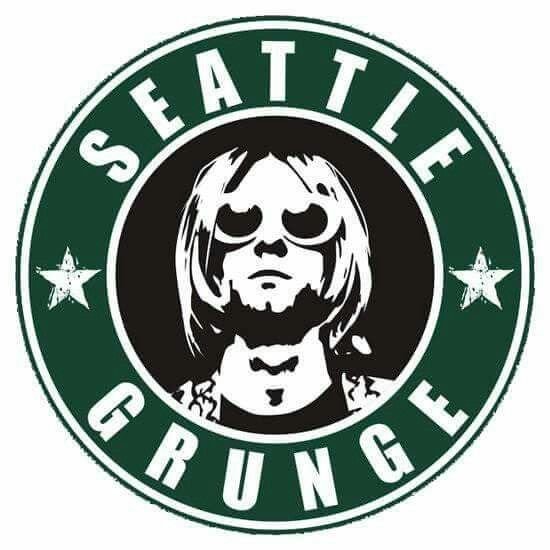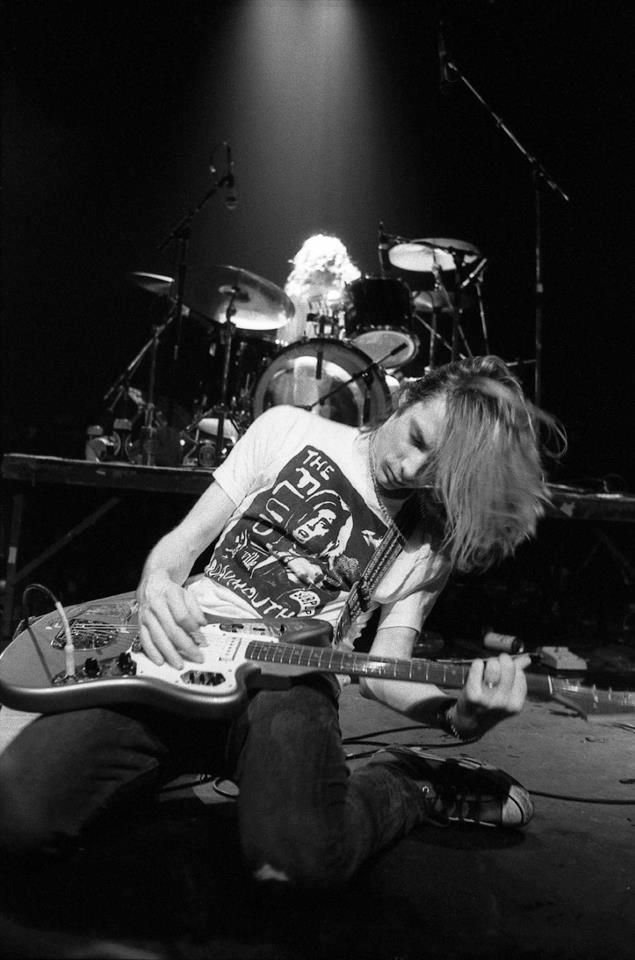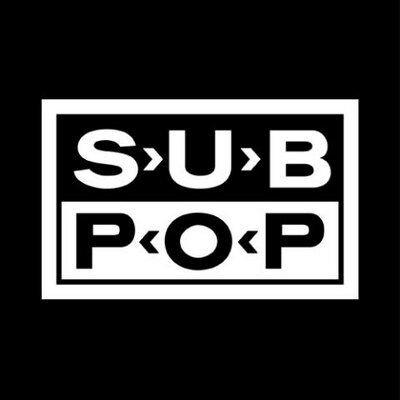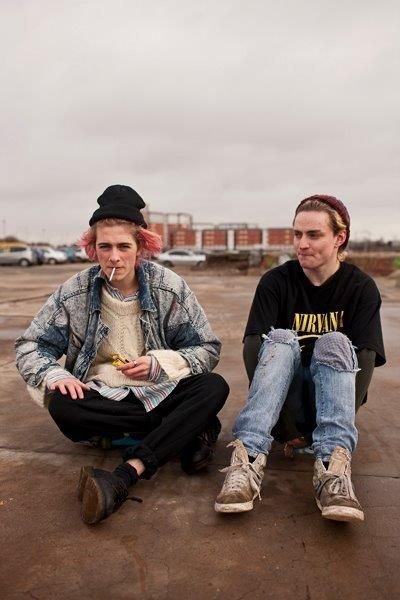Seattle, the city that gave birth to the furious years of grunge.

In the 80's, the owners of the United States music scene were the glam metal bands, groups like Mötley Crüe, Bon Jovi, Van Halen, Poison, Ratt, among others. Handfuls of young people with long hair and very elaborate clothes that made their songs about women, sex, love and drugs.
Meanwhile in England heavy metal struggled not to disappear against the hegemony of punk, which had extended since the beginning of the decade. The industrial sound attributed to Black Sabbath guitarist Tony Iommi and impregnated with the dark ambiance of Birmingham was cornered by the repetitive chords and the anarchic lyrics of bands like The Ramones, Sex Pistols or The Clash. From these two streams, little by little, a musical movement was sprouting and nourishing, until creating a 'new model' of rock, a new way of assuming youth.

It was baptized as 'grunge', the musical genre of the rejected and the unpopular. It took place in Seattle, Washington, an average city of the United States, and was characterized by the air of nonchalance and pessimism it conveyed. However, in its beginnings it was quite heterogeneous and very difficult to define. The lyrics, dark and self-reflective, reflected a life without future or great aspirations, typical of the youth of the 80's and early 90's.
Musically, 'grunge' was heavily influenced by heavy metal and punk rock, appealing to noisy guitars and repetitive riffs with no ambition for virtuosity. The battery had a strong protagonism and the voices varied between guttural and deep ripples, and melodic and depressive songs.
The movement began in the mid-1980s, with bands that aimed at punk or metal, but did not reap success. These groups then began to create, from a feeling of musical marginalization, an uncomplicated style, noisy, absurd and heavy. Bands like The U-Men, Green River, The Fastbacks or Mudhoney seeded the seed of a movement that would attract crowds in the early 1990s.
Cenit and decay
In 1991, Nirvana's album 'Nevermind' sparked a massive media explosion that surpassed the boundaries of Washington state. Kurt Cobain's band (a rockstar by the years), Krist Novoselic and Dave Grohl had managed to conjure up the stridencies of the Seattle sound in a style that sounded mature and strong. Nirvana became the band that embodied the grunge era.
Paradoxically, with the media explosion of the genre, fueled by the rise of other pioneering bands such as Pearl Jam, Soundgarden and Alice in Chains, among others, came the decline of the genre. The musical climax of the second half of the 80s was followed by the ambition of the record companies to profit unabashedly products and new but not so good bands. The media and fashion 'swallowed' the movement.
Soon the standardization of 'grunge' and its simplification. It blurred the diversity that gave the genre its reason of being. The bands that survived had to overcome the aversion to success and the media and to understand the new dynamics of a movement that despite its short rise had time to forge its classics and write its own history. This is a brief guide to your milestones and protagonists.
The Term "Grunge"

The term is attributed to Mark Arm, lead singer of Green River and then Mudhoney, who used it to critique the band Mr. Epp and the Calculations in a letter sent to the Seattle's magazine 'Desperate Times'. The word, which denotes dirt or grime, was popularized by Sub Pop's Bruce Pavitt, constantly describing the sound of Green River's band as "grunge."
The Sound of Seattle

Seattle was always a secondary city of the United States, with a mild climate and largely isolated from the cultural movement of cities such as New York or Los Angeles. This isolation generated a musical scene of its own, endogenous and empirical that fed on its own 'solitude'. The '' grunge '' grouped the youth with a number of bands that shared members and spaces, in a kind of friends circuit. It generated a diverse and own space in the middle of the city.
Sub Pop

Jonathan Poneman and Brice Pavitt, two fans of Seattle bands, decided to create a record label that pushed them. For that they founded Sub Pop, in Olympia, in 1986, taking the name of a magazine that Pavitt edited. The label quickly became the representative of Seattle's grunge. However, in its quest to define a musical genre that could be offered to a specific audience, it ended in a new process of homogenization and simplification of the city's music scene.
Fashion

Once the album Nevermind of Nirvana was published, there was a media explosion of 'grunge' that transcended the music scene and became an aesthetic and marketable fashion. Magazines such as Rolling Stone or Vanity Fair, including Time, echoed the phenomenon, setting guidelines for what was and was not 'grunge'. Lumberjack shirts, with their distinctive plaid designs tied at the waist, torn jeans, woolen caps, wide jackets, and boots were an outfit that even wandered the catwalks of the United States and the world.
For the cultural and musical movement of Seattle, this meant the trivialization of what they had created, many bands felt used and others took advantage of the boom to get something successful. Characters like Kurt Cobain and Eddie Vedder were overwhelmed by success and fame. Cobain committed suicide in 1994.
Mother Love Bone

Band founded in Seattle in 1988, led by Andrew Wood (lead singer), Jeff Ament and Stone Gossard. They merged the sounds of glam and punk, which gave them a place on the city's music scene. Their only album, Apple, was released months after Wood's death, which would end the project.
Several of their ex-members would form Pearl Jam.
Alice in Chains

Its sound was more associated to heavy metal, nevertheless it shared the depressive and pessimistic concept in its lyrics. Their first EP was produced in 1990, 'We die young'. In that same year they recorded the LP 'Facelift', which was followed by 'Dirt' (1992). After the death of Layne Staley (lead singer), in 2002, the band met again in 2005 with a new singer.
Layne Staley (1967-2002)

He was the son of a wealthy Kirkland family. Along with Jerry Cantrell founded Alice in Chains in 1986 of which was its lead singer. He died at home after an overdose of heroin and cocaine.
And although there are many other bands that were part of the seattle grunge scene these where the main Icons of the Grunge scene back in the 90s, personally I love this genre and grew up listening to bands such as Pearl Jam, Nirvana Soundgarden, share with us which were your favorite bands of the time in the comments and don't forget to upvote and resteem if you liked this post.
Thank you for your support
This post recieved an upvote from minnowpond. If you would like to recieve upvotes from minnowpond on all your posts, simply FOLLOW @minnowpond
Props for mentioning the U-Men. One of Seattle's best bands and vastly overlooked. Melvins and Skinyard were crucial in the development of the grunge sound also.